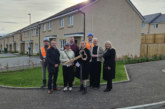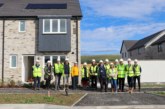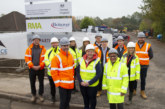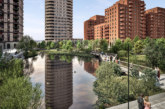Thousands of new homes will be built on underused and derelict land to regenerate local areas and help people onto the property ladder, the Department for Levelling Up, Housing and Communities (DLUHC) has announced.
Almost £58m from the £75m Brownfield Land Release Fund (BLRF) has been allocated to 53 councils. The funding will boost local areas by transforming unloved and disused sites into vibrant communities for people to live and work, with the demolition of unsightly derelict buildings and disused car parks and garages. This will help to protect countryside and green spaces while an extra 5,600 homes are built on these sites, supporting young people and families across the country into home ownership.
The funding could also support up to 17,000 jobs across the housing and construction sector and the wider economy.
Secretary of State for Levelling Up, Michael Gove MP said: “We are levelling up and backing home ownership in every corner of the country, delivering new high-quality, affordable homes and creating thriving places where people want to live, work and visit.
“Making the most of previously developed land is a government priority and it will help protect our cherished countryside and green spaces.
“Today’s allocations include £5m for self and custom build projects. A further £20m from the BLRF has also been designated to help accelerate the self and custom build sector, with councils now able to bid for the remaining funding — giving local people the opportunity to build and design their own homes.”
Cabinet Office Minister, Lord Agnew commented: “This support being provided to local authorities is another clear demonstration of this government’s commitment to levelling up the country.
“The latest projects to benefit from this support, through Brownfield Land Release funding, will not only help unlock under-used public sector sites for homes but also help deliver jobs and save taxpayers’ money.”
Cllr James Jamieson, Local Government Association Chairman, said: “One Public Estate and Brownfield Land Release funding play a crucial role in supporting the recovery from the COVID-19 crisis, and supporting councils to transform their assets, create better services, and release land for much-needed new homes and regeneration across the country.
“This latest news is more proof that this programme works. Councils recognise how valuable this support is, and are being ever more ambitious in their ideas to use this funding to kick-start transformation, regeneration, and new development in their communities.”
Boosting housing supply is central to the levelling up agenda. Last year 244,000 homes were delivered — the highest number of new homes for over 30 years. The Government aims to build up to 300,000 new homes a year by the mid-2020s to put home ownership within reach for more people across the country, making it a more mainstream, realistic and affordable option for people across the country.
The Government last year announced the £400m Brownfield Fund for seven mayoral combined authorities which will also deliver much-needed new homes on brownfield land — unlocking 26,000 high-quality homes.
The £150m backed Help to Build scheme was announced in April. It will allow access to low deposit mortgages and improve affordability of home ownership for people who want to build their own homes in a similar way to the Help to Buy scheme.
In addition, the review by Richard Bacon MP, which recommended a major scaling up of the self and custom build sector, has been warmly welcomed by the government with a response to the findings to be published in due course.
Lawrence Turner, Associate Director of Boyer planning consultancy, added: “While the new allocation announced today is good news for under-utilised urban sites, it only goes a small way to delivering the 300,000 homes required each year. Brownfield land is notoriously difficult to develop. By its nature, brownfield land is often contaminated, requiring expensive remediation works, which restricts scheme viability. While brownfield sites will be developed as a result of this announcement, those of less certain success will be stalled by changes in the housing market, build costs and in Government policy — such as changes in relation to phosphates which is an unresolved and very immediate concern that particularly affects brownfield sites.
“With marginal viability, fewer affordable homes will be delivered, which will compound affordability issues in some areas. Furthermore, while brownfield land typically delivers smaller one and two-bedroom properties, such as apartments, rather than the family homes which are in shortest supply.
“While we support measures to encourage self-build homes, we also have reservations on an over-reliance on self-build, which will not deliver significant numbers and is likely to require Government interventions such as a relaxation of CIL and other tax incentives.
“So while we welcome this announcement, as a necessary piece in the jigsaw that is the housing crisis, it is in reality only a very small piece. An increase in the number and speed of delivery of new settlements will complete the jigsaw.”
Peter Hawthorne, CEO of LCR, the Government’s regeneration expert, said: “We welcome the Government’s commitment to support councils working to unlock brownfield land for development. To make this cash work as hard as possible, we would encourage local authorities to consider the benefits of transport-linked land.
“Transport-linked land is often home to unloved, underutilised sites — and can sometimes be examples of the ‘unsightly’ areas Michael Gove referred to in his announcement. They offer huge, untapped potential for exciting development and regeneration projects. Invariably located in and around town centres, transforming these sites acts as a catalyst for wider transformation in the community, helping to turbocharge regional economic growth and deliver public value.
“Transport-linked land can play a key part in meeting the Government’s ambitions for new homes, delivering community-centric, connected residential developments.”
Header image © Phil/AdobeStock









